ВУЗ: Казахская Национальная Академия Искусств им. Т. Жургенова
Категория: Книга
Дисциплина: Не указана
Добавлен: 03.02.2019
Просмотров: 17307
Скачиваний: 51
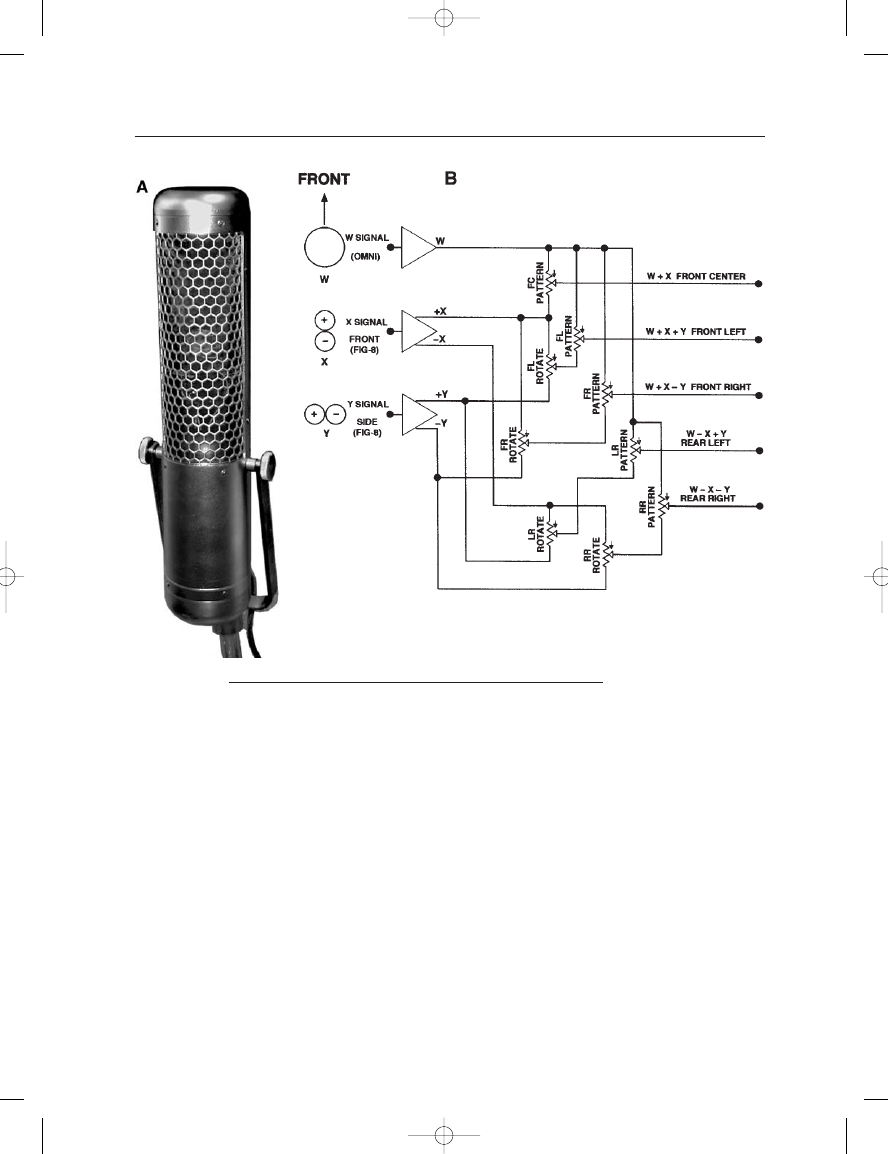
THE MICROPHONE BOOK
188
binaural recording into stereo by using a crosstalk canceling method,
such as that shown in Figure 12–6C. Because the head is small with
respect to the wavelengths of frequencies below about 700 Hz, sound
bends around the structure with little attenuation. There is however a
significant phase difference at the two microphones due to their spacing,
and this phase difference can be effectively converted to an amplitude
difference by applying equalization along with sum and difference net-
works. The technique has much in common with the basic Blumlein
setup shown in Figure 12–1.
Some manufacturers offer spherical baffles. These are similar to arti-
ficial heads, but are normally used directly for stereo recording with no
requisite LF crosstalk cancellation. Significant work in the development
of these recording methods has been carried out by Günther Theile
(1991). A further distinction is that their pressure microphones are
FIGURE 12–4
Details of the Josephson Engineering model C700S stereo/surround microphone system;
photo of microphone (A); signal flow diagram (B). (Data courtesy of Josephson Engineering.)
Earg_12.qxd 14/9/04 2:51 PM Page 188
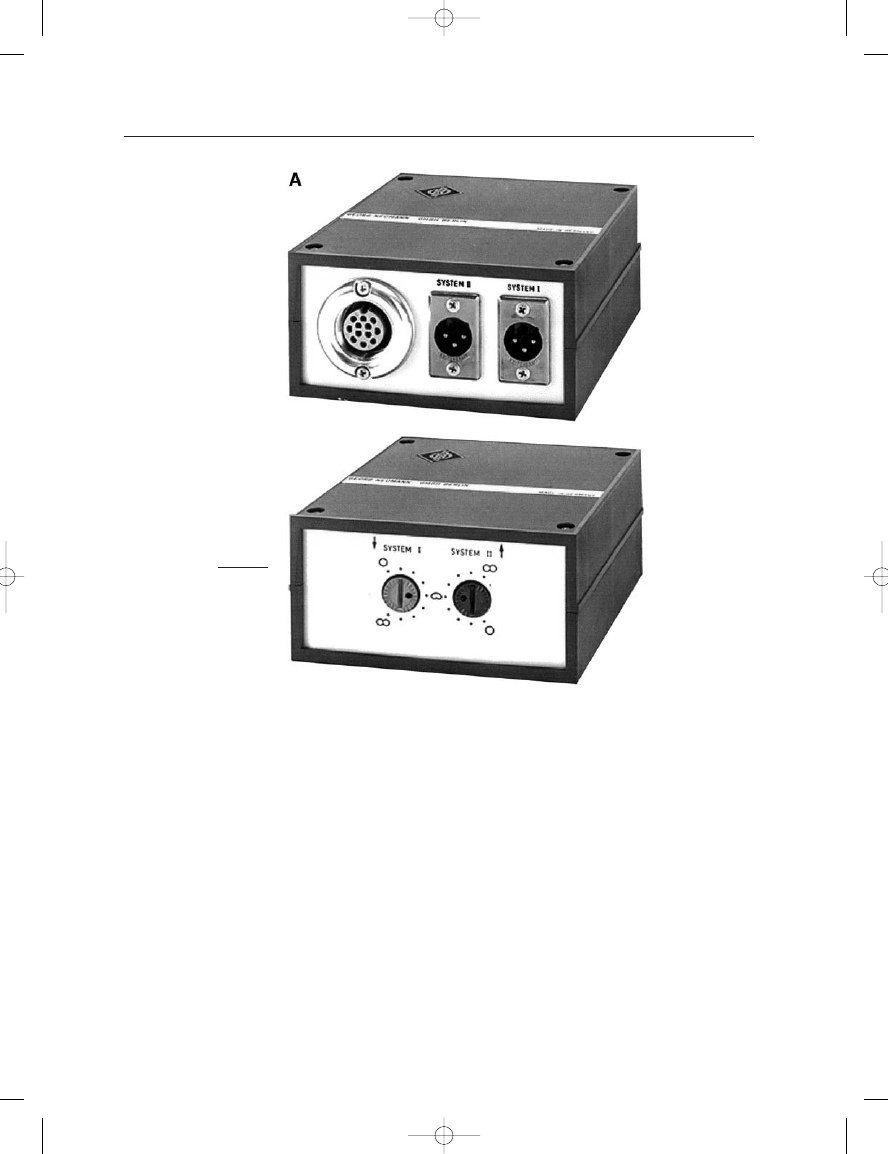
12: Stereo Microphones
189
FIGURE 12–5
Stereo microphone remote
control unit: photo of
Neumann CU 48i remote
pattern selector (A); signal
flow diagram of CU 48i
(B). (Data courtesy of
Neumann/USA.)
mounted directly on the spherical surface, resulting in relatively flat
response. A typical example of this is the Neumann KFM-100 system
shown in Figure 12–7A. Frequency response and polar response in the
horizontal plane are shown in Figure 12–7B and C.
Figure 12–8A shows a view of the Crown International Stereo
Ambient Sampling System
TM
(SASS). Small omnidirectional microphones
are positioned on each side at the apex of the foam-lined structure,
roughly at ear distance. The shading of the unusual structure results in
the polar patterns shown at B, which indicate a gradual transition above
500 Hz to a clear
45 pair of pickup patterns above about 3 or 4 kHz.
Various forms of flat baffles have been used over the years to
increase separation between near-coincident stereo microphones at high
frequencies. In the modern stereo era, Madsen (1957) appears to have
been the first to make use of such a baffle, as shown in Figure 12–9A. A
modern example here is the Jecklin disc (1981), shown at B. Here, an
acoustically damped disc with a diameter of 250 mm (10 in) is placed
between two omnidirectional microphones. For sounds originating at
Earg_12.qxd 14/9/04 2:51 PM Page 189
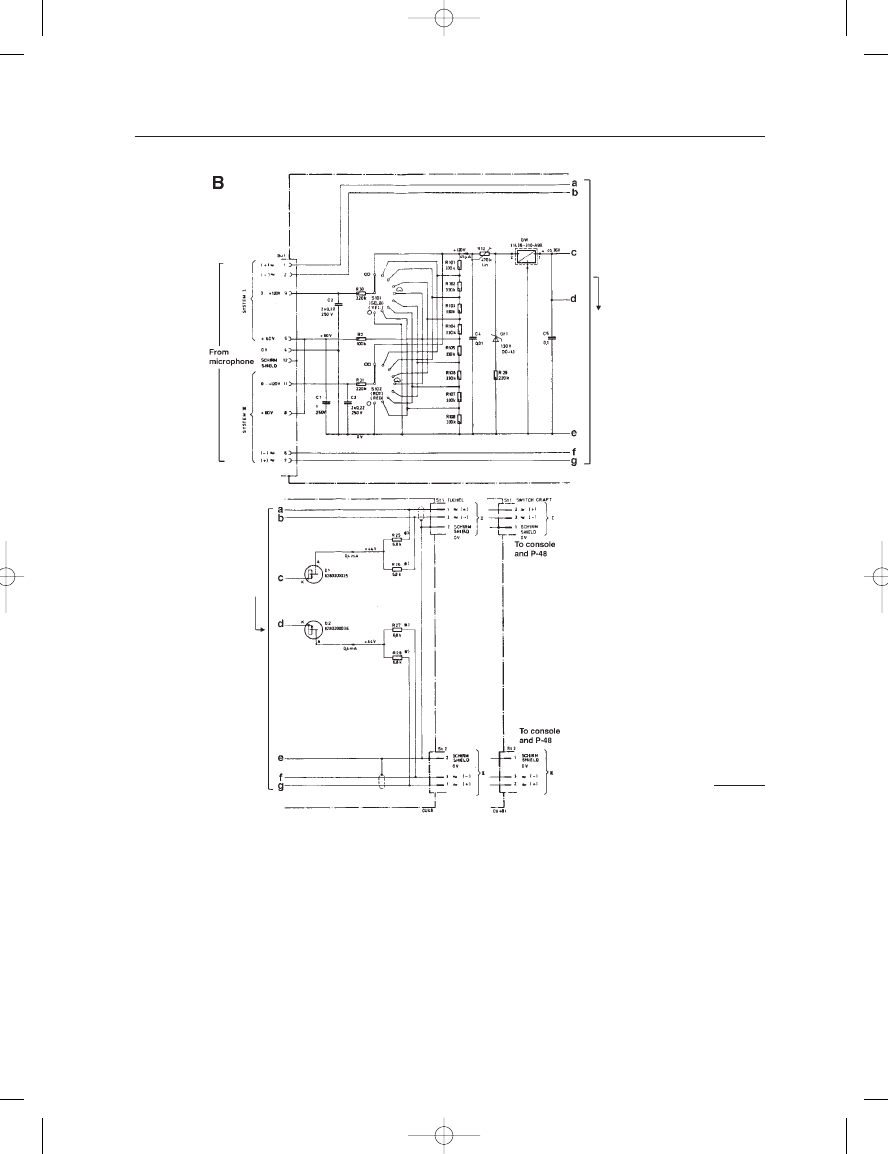
THE MICROPHONE BOOK
190
90
to the array the delay between the two microphones will be about
0.7 ms, which is only slightly greater than the equivalent delay around
the human head. Shadowing effects for the far-side microphone will be
somewhat more complicated than for a head or a sphere, due to the
rather complex nature of diffraction effects around a plane as opposed
to a spherical or other smooth three-dimensional surface.
There are many competing stereo systems embodying spheres and
many types of baffles. The differences among them can be fairly subtle
and have to do basically with dimensions (most do not depart from
FIGURE 12–5
Continued.
Earg_12.qxd 14/9/04 2:51 PM Page 190
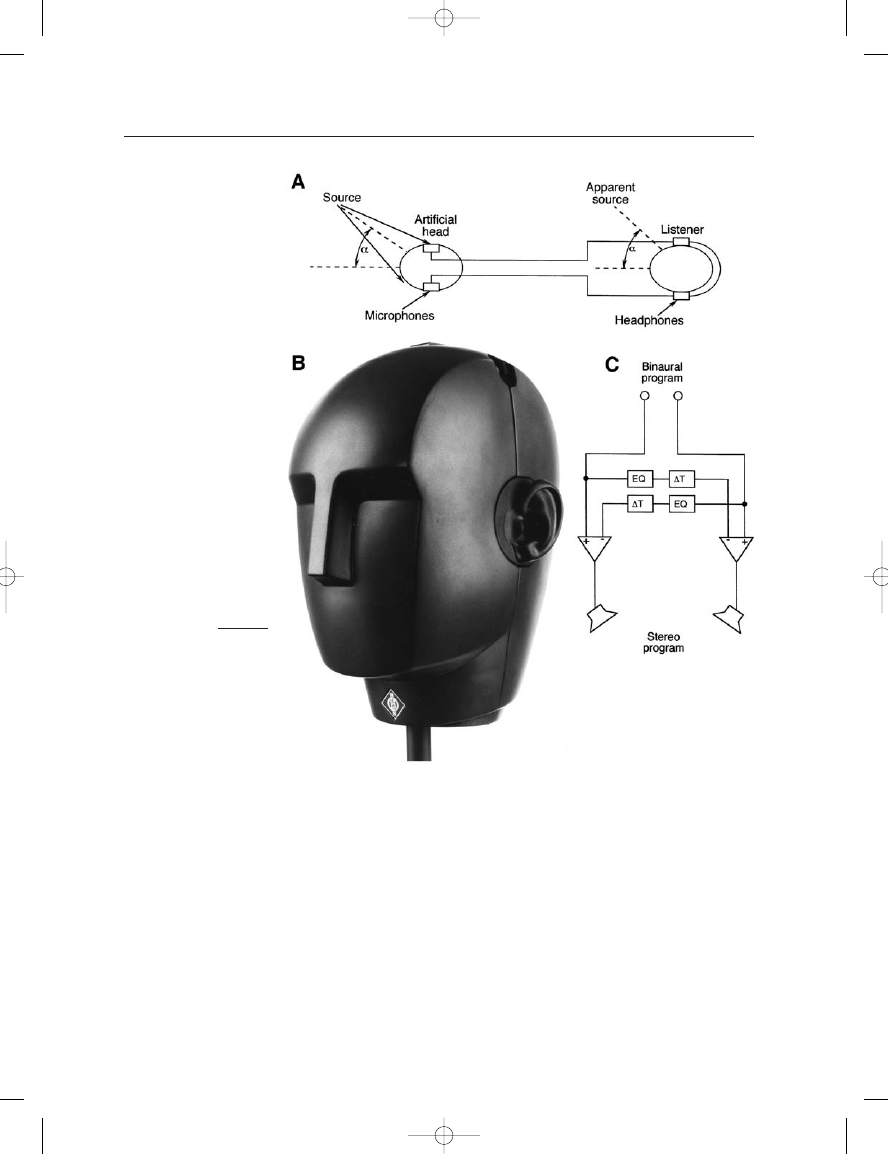
12: Stereo Microphones
191
normal head dimensions significantly), materials (absorptive or not), and
careful equalization in the microphone channels.
FIGURE 12–6
Basic binaural recording
signal flow diagram (A);
photo of the Neumann KU
100 binaural head (B);
binaural to stereo
conversion (C). (Photo
courtesy of
Neumann/USA.)
Earg_12.qxd 14/9/04 2:51 PM Page 191
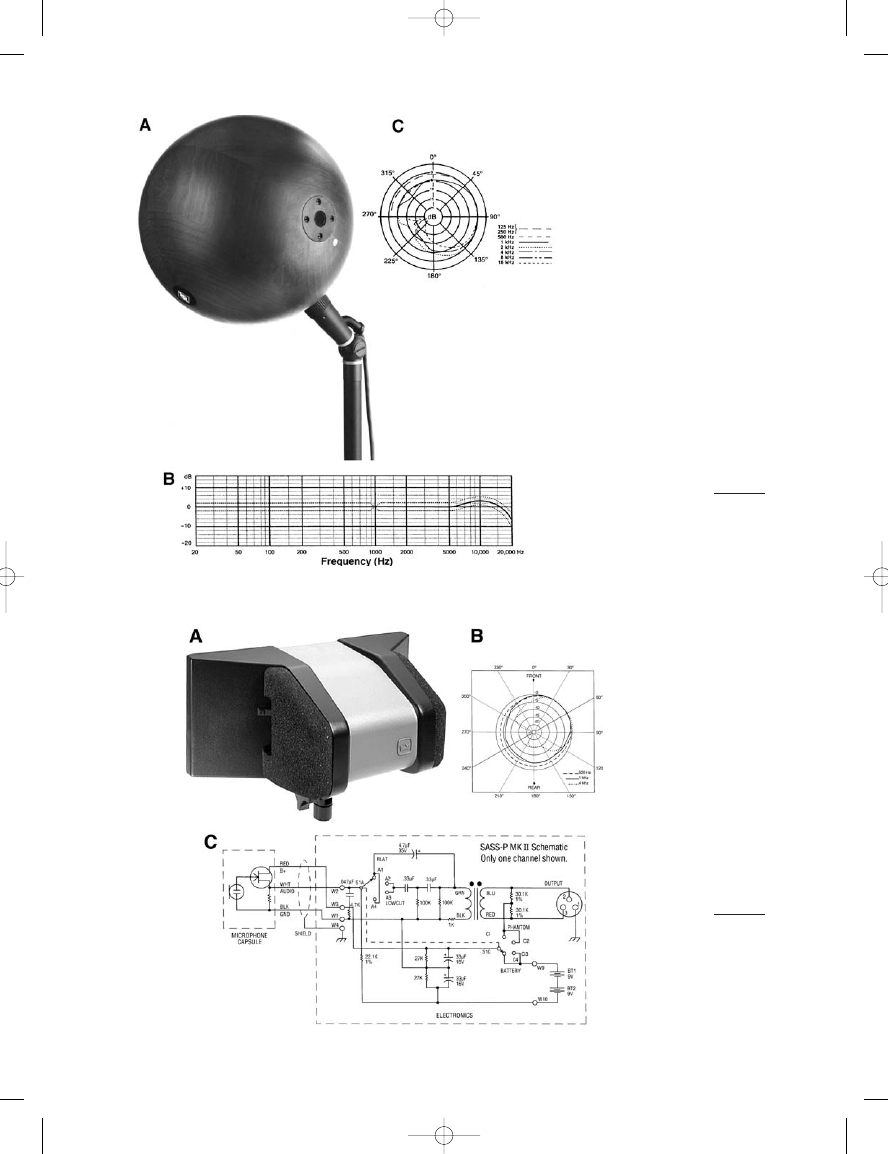
FIGURE 12–8
The Crown Internal SASS
system: photo of structure
(A); typical polar response
(B); circuit diagram of
system (C). (Data courtesy
of Crown International.)
FIGURE 12–7
Neumann KFM 100 sphere
(A); frequency response (B);
polar response (C). (Data
courtesy of Neumann/USA.)
Earg_12.qxd 14/9/04 2:51 PM Page 192